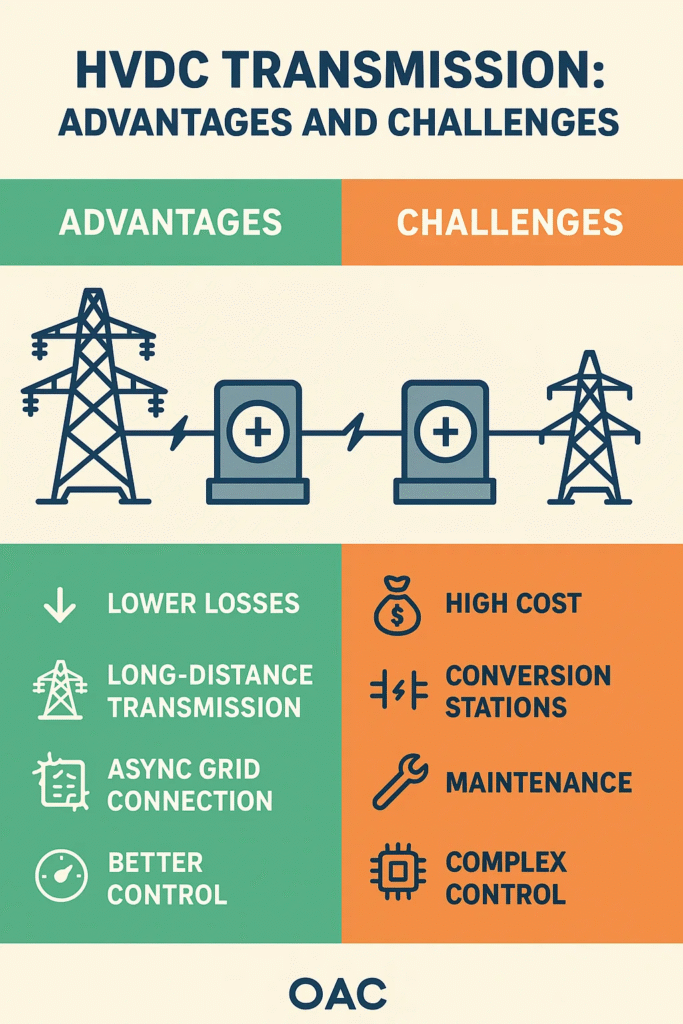Introduction
High Voltage Direct Current (HVDC) transmission is a modern technology used for efficient long-distance power transfer. Unlike traditional Alternating Current (AC) transmission, HVDC minimizes power losses, enhances grid stability, and supports renewable energy integration. As global energy demands increase, HVDC systems are becoming essential for interconnecting power networks and ensuring reliable electricity distribution.
Advantages of HVDC Transmission
HVDC technology offers several benefits over conventional AC transmission:
- Lower Transmission Losses
- HVDC systems experience lower resistive losses compared to AC transmission, making them ideal for long-distance power transfer.
- Efficient Bulk Power Transmission
- HVDC allows the transfer of large amounts of electricity over extended distances without significant voltage drops.
- Improved Grid Stability
- HVDC enhances system stability by reducing the risk of cascading failures and enabling better control over power flow.
- Integration of Renewable Energy Sources
- HVDC facilitates the connection of remote renewable energy sources, such as offshore wind farms, to the main grid.
- Interconnection of Asynchronous Grids
- HVDC enables the linking of power systems operating at different frequencies, improving energy exchange between regions.
- Reduced Right-of-Way Requirements
- HVDC transmission lines require fewer conductors and narrower corridors, minimizing environmental impact.
- Enhanced Voltage Control
- HVDC systems provide precise voltage regulation, reducing fluctuations and improving power quality.
Challenges of HVDC Transmission
Despite its advantages, HVDC transmission faces several challenges:
- High Initial Costs
- The installation of HVDC converter stations is expensive, requiring significant investment.
- Complex Maintenance and Operation
- HVDC systems involve sophisticated control mechanisms that demand specialized expertise for maintenance.
- Limited Availability of HVDC Components
- HVDC technology relies on specialized equipment, which may not be readily available in all regions.
- Converter Station Losses
- While HVDC reduces transmission losses, converter stations introduce additional energy losses.
- Electromagnetic Interference (EMI)
- HVDC transmission can generate electromagnetic disturbances, affecting nearby communication systems.
- Environmental and Social Concerns
- The construction of HVDC infrastructure may face opposition due to land use and ecological impact.
Future Prospects
Advancements in HVDC technology, such as Voltage Source Converters (VSCs) and Ultra-High Voltage DC (UHVDC) systems, are addressing existing challenges and expanding its applications. As energy grids evolve, HVDC is expected to play a crucial role in global power transmission, supporting sustainable energy solutions and improving grid resilience.

Conclusion
HVDC transmission is a transformative technology that enhances efficiency, stability, and sustainability in power distribution. While challenges such as high costs and complex maintenance exist, ongoing innovations are making HVDC more accessible and reliable. As the world moves toward cleaner energy solutions, HVDC will continue to shape the future of electricity transmission.
